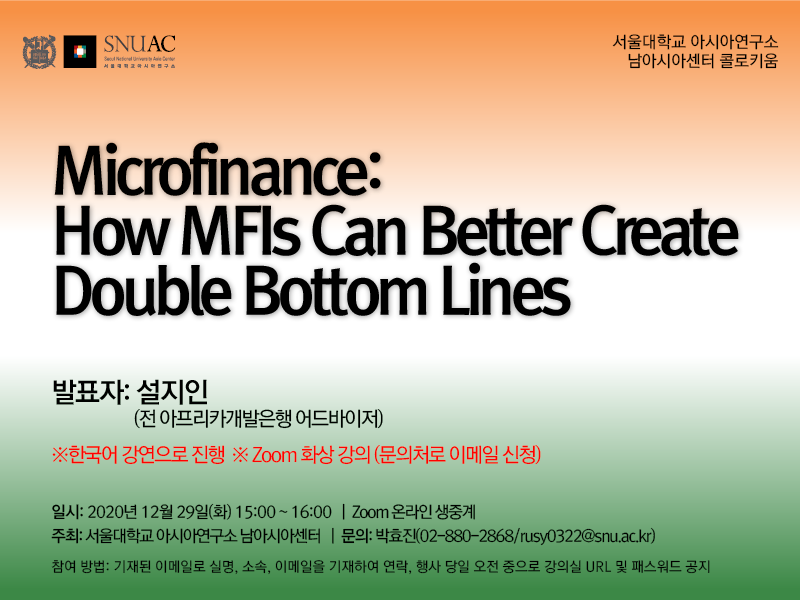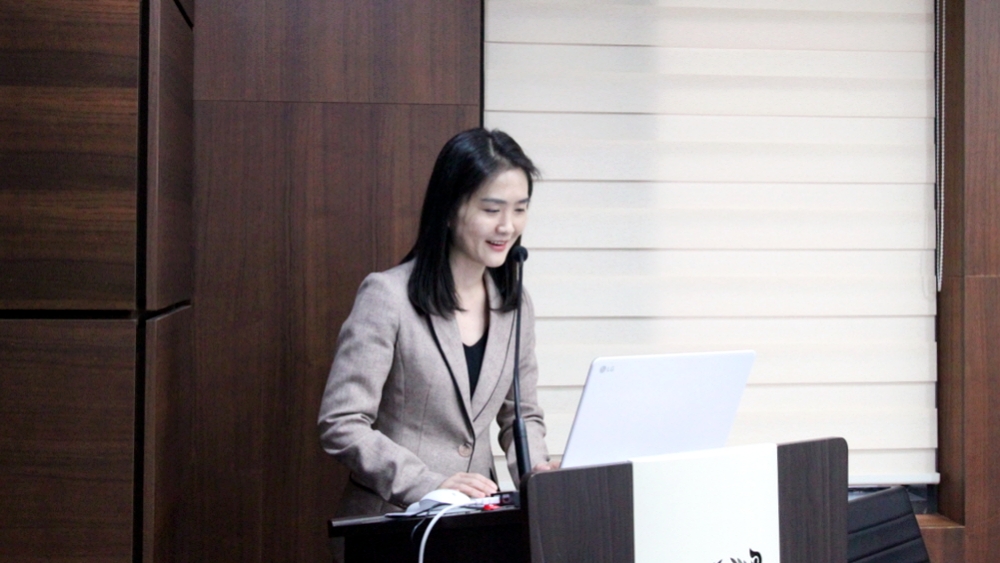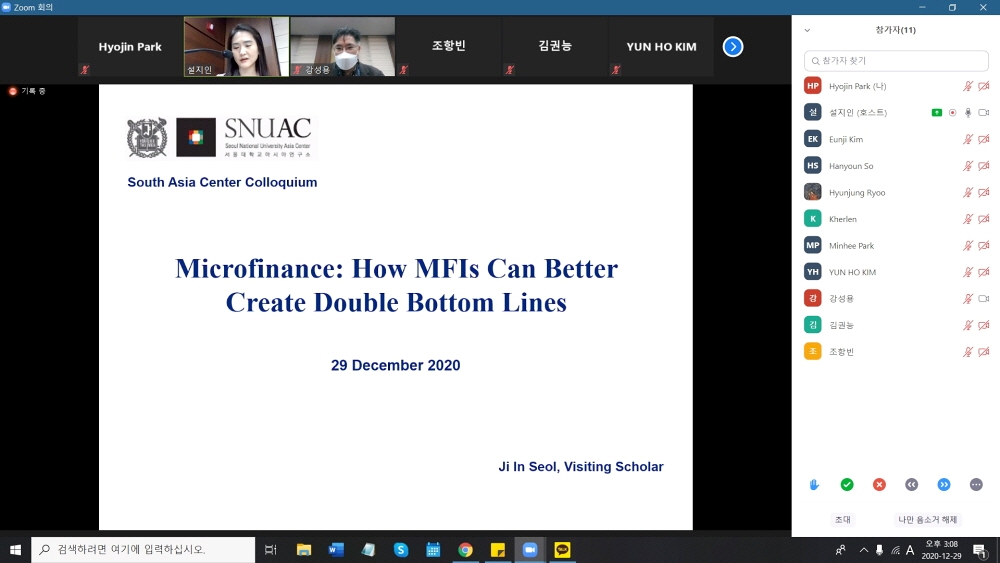
발표자: 설지인 (전 아프리카개발은행 어드바이저)
※한국어 강연으로 진행
※ Zoom 화상 강의 (문의처로 이메일 신청)
Microfinance may be one of the world’s powerful solutions to poverty and the suffering that poverty ignites – only if it works. Supporters of microfinance contend that small loans fuel economic self-sufficiency, that the billions of dollars microfinance institutions (MFIs) such as Grameen Bank, Accion International and the more have given to millions of small-sized impoverished entrepreneurs have increased household consumption, given women more clout in their communities and improved the nutrition of young children. Critics, on the other hand, contend that the world’s most vulnerable people are in no position to take on the risks of entrepreneurship, pointing to the evidence that stable jobs in large industries, rather than the volatile small businesses, lift people out of indigence. They argue that overall, microfinance fails to find its way to the world’s poorest people. As such, the practice and studies of microfinance are inconclusive. MFIs vary so much in their missions, strategies and tactics that conducting research and assessing their overall impact may not yet be possible; however, in this debate over whether microfinance works or not, it is worthwhile to note that few MFIs articulate what exactly their ultimate goals are and how they will achieve them. This colloquium is to cut through the confusion around microfinance by mapping a clear theory of change towards effective and cost-efficient client-centered microfinance programs.
Photo
Review
Microfinance는 1970년대 초 아시아 발리에서 가난한 사람들을 위한 대출과 저축을 제공하면서 시작되었고, 같은 해에 콜롬비아에서도 비슷한 시도가 있었다. 몇 년 후에는 ACCION이라는 단체가 브라질에서 성공적으로 microenterprise credit 사업을 수행하였으며 그 후 1976년 그라민 은행도 방글라데시에서 비슷한 사업을 하였다. 이러한 사례들 바탕으로 하여, 1990년 Hans D Seibel은 Microfinance라는 용어를 도입하였다. 단순한 대출만이 아니라 보험과 저축 역할까지 겸하고 있기 때문에, 폭넓은 용어를 택한 것이다.
Microfinance는 과연 빈곤문제의 좋은 해결책일까? Microfinance에 대해 제기되는 여러 의문점이 있다. 첫번째는 “정말로 가난한 사람들 중에서도 가난한 사람을 지원하는 것이 맞는가?”이다. 사실 최빈곤층을 대상으로 Microfinance를 하기가 상당히 어렵기 때문이다. 두번째는 “오히려 가난한 사람들을 더 불행하게 만드는 것이 아닌가?”이다. 잘못된 사업의 경우 빈곤층에게 더 해로울 수 있게 때문이다. 세번째는 “Microfinance의 돈을 빌려가는 사람들을 기업가라고 부르는 것이 옳은가?”이다. Microfinance의 대상들은 새로운 사업을 통해 새 일자리를 창출하기 어려운 사람들이다. 그들이 돈을 빌려서 얼마나 자신의 사업을 개선할 수 있는지가 불확실하다.
앞에서 언급한 문제들을 해결하기 위해 고객 중심의 사업을 대안으로 제시할 수 있을 것이다. 몇 가지의 커다란 사업만 하는 기관중심 MFI와는 달리, 고객 중심의 MFI는 고객들에게 더 추가적인 서비스를 해주고 있다. 예를 들어 BRAC는 고객의 가족이 아플 때 상환율이 떨어지는 것을 발견하고, 건강 유지를 위한 도움까지 제공하고 있다. 또한 고객들이 돈을 더 잘 활용할 수 있도록 도와주고 있다. 즉, 개별 고객들의 경우를 고려하여 도움을 주는 것이다. 좋은 사업이지만, 이것을 어떻게 유지가능한 사업으로 만들 수 있을 것인지는 아직 불확실하다. 해결책은 아마도 기술의 발전에서 찾을 수 있을 것이다.






